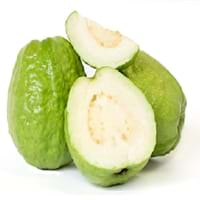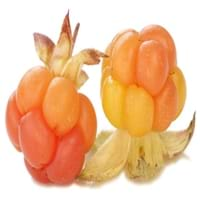Health Benefits
Cancer prevention, Diarrhea treatment, Prevents constipation, Scurvy treatment, Treatment of dysentary
Cancer prevention, Heart care
General Benefits
Controls blood pressure, Cures cough, Improves eye vision, Maintains healthy cholesterol level, Treatment of common cold
Anti oxidant properties, Boosts immune system, Digestive aid, Improves blood circulation, Maintains healthy cholesterol level, Strengthens bones
Skin Benefits
Anti-aging benefits, Brightens and lightens complexion, Hydrates skin, Treatment of skin diseases
Anti-aging benefits, Reduces wrinkles, Skin rejuvenation
Hair Benefits
Prevents hair loss
Protects hair
Allergy Symptoms
Breathing difficulty, Coughing, Runny nose, Sneezing, Swelling of mouth, tongue or lips, Wheezing
NA
Side Effects
Hair thinning, Nail thinning, Skin problems, Tooth decay, Weakness, Possibly unsafe during pregnancy
Allergic reaction
Best Time to Eat
As a snack in the late afternoon, Don't consume at night and before bed, Eat the fresh ones, avoid mixing with any other foods, don't eat after meal., Morning time (before lunch)
As a snack in the late afternoon, Don't consume at night and before bed, Eat the fresh ones, avoid mixing with any other foods, don't eat after meal., Morning time (before lunch)
Vitamin A (Retinol)
Not Available
Vitamin B5 (Pantothenic Acid)
Not Available
Vitamin B6 (Pyridoxin)
Not Available
Vitamin B9 (Folic acid)
Not Available
Vitamin C (Ascorbic Acid)
Vitamin E (Tocopherole)
Not Available
Vitamin K (Phyllochinone)
Not Available
Lutein+Zeaxanthin
Not Available
Calories in Fresh Fruit with Peel
Calories in Fresh Fruit without Peel
Not Available
Not Available
Calories in Frozen Form
Not Available
Not Available
Calories in Dried Form
Not Available
Calories in Canned Form
Not Available
Type
Tree fruit, Tropical
Berry
Season
All seasons
Winter
Varieties
Lucknow 49, Allahabad Safeda, Chittidar, Harijha, Apple guava, Hafshi, Arka Mridula and Allahabad Surkha
Not Available
Color
Green, Pink, Yellow
Orange, Pink, Yellow
Inside Color
White
Orange
Taste
Sweet-Sour
Sweet-Sour
Origin
Central America, Mexico, South America
Arctic Tundra
Soil Type
Loam, Rocky, Sandy
Loam, Well-drained
Climatic Conditions
Sunny
Cold, Warm
Facts about
- The black pigment in Guava leaves is used for textile applications.
- Guava leaves are used to make tea.
- Oils extracted from guava seeds are used in various cosmetics.
- Guava wood is used for decorative purposes.
- Cloudberry is also called as bakeapple, knotberry , knoutberry, aqpik or low bush salmonberry.
- In Nordic countries, cloudberries are used to make traditional liqueurs.
Top Producer
India
Norway
Other Countries
China, Indonesia, Mexico, Nigeria, Pakistan, Philippines, Thailand
Canada, Denmark, Finland, Iceland, Sweden, United States of America
Top Importer
Canada
Norway
Top Exporter
India
Finland
Botanical Name
Psidium guajava
Rubus chamaemorus
Synonym
Not Available
Not Available
Subkingdom
Tracheobionta
Tracheobionta
Division
Magnoliophyta
Magnoliophyta
Class
Magnoliopsida
Magnoliopsida
Family
Myrtaceae
Rosaceae
Species
Psidium guajava
R. chamaemorus
Generic Group
Myrtle
Not Available
Difference Between Guava and Cloudberry
We might think that Guava and Cloudberry are similar with respect to nutritional value and health benefits. But the nutrient content of both fruits is different. Guava and Cloudberry Facts such as their taste, shape, color, and size are also distinct. The difference between Guava and Cloudberry is explained here.
The amount of calories in 100 gm of fresh Guava and Cloudberry with peel is 68.00 kcal and 51.00 kcal and the amount of calories without peel is Not Available and Not Available respectively. Thus, Guava and Cloudberry belong to Low Calorie Fruits and Low Calorie Fruits category.These fruits might or might not differ with respect to their scientific classification. The order of Guava and Cloudberry is Myrtales and Rosales respectively. Guava belongs to Myrtaceae family and Cloudberry belongs to Rosaceae family. Guava belongs to Psidium genus of Psidium guajava species and Cloudberry belongs to Rubus genus of R. chamaemorus species. Beings plants, both fruits belong to Plantae Kingdom.









